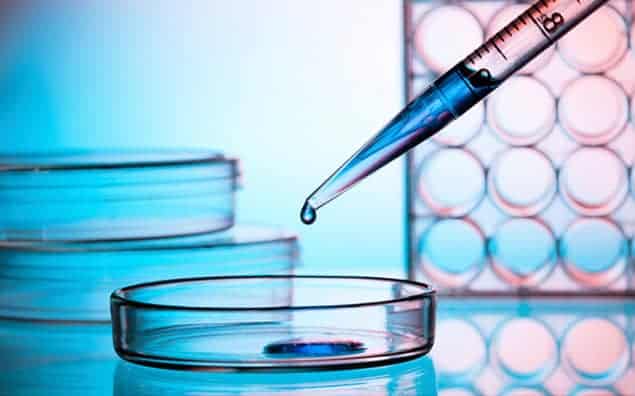
A genetically engineered virus has been used as a scaffold to optimize the transport of energy through organic materials. Done by scientists in the US and Italy, the research could provide useful insight into energy transport in photosynthesis, and could also have industrial applications in solar cells, sensing and medical diagnostics.
Plants and organic photovoltaic cells capture energy from sunlight using molecules called chromophores. When light hits a chromophore, it creates a bound electron–hole pair called an exciton. This exciton then diffuses through neighbouring chromophores until it reaches an acceptor, where excitons are collected and separated to create a voltage. Therefore the efficiency of an organic photovoltaic cell can be improved by maximizing the chance that an exciton will reach an acceptor before the electron and hole recombine, destroying the exciton and losing its energy as heat.
Quench and decay
When the chromophores are not bound together, excitons can survive for 4 ns. When scientists create artificial structures by bringing chromophores into close proximity, the excitons “quench” each other and usually decay within 500 ps – about eight times faster than unbound chromophores. This phenomenon, discovered in the 1960s by the chemist George Porter, is not well understood, and plants have managed to create structures that somehow avoid this rapid decay. As a result, understanding why excitons survive longer in natural photosynthesis and using this knowledge to improve artificial systems is an important goal.
Traditionally, scientists model the propagation of excitons between chromophores using a mechanism called Förster resonance energy transfer, in which the excitons hop between chromophores in a semi-classical random walk. In 2009, researchers led by Alán Aspuru-Guzik of Harvard University showed theoretically that, if the chromophores were close enough, the excitons could become delocalized across multiple chromophores, leading to an enhancement in the transport properties that could explain the natural efficiency of exciton transport in photosynthesis.
In the new research, Seth Lloyd – who worked with Aspuru-Guzik on the 2009 research – Angela Belcher and colleagues at the Massachusetts Institute of Technology and several institutes in Italy, created networks of chromophores in which to test this hypothesis.
Fine-tuned separation
The networks were produced by the M13 phage, which is a virus that infects bacteria. This virus has proven useful in developing a range of technologies including sensing, medical diagnostics and solar cells because of its ability to self-assemble into nanostructures called viral plaques. The virus contains a protein on its surface called pVIII that can bind chromophores, and Belcher and colleagues genetically modified the amino-acid sequence of this protein to tune the distance between these binding sites. In the first virus they produced, called M13CF, the difference between the binding sites was about 33 Å – far enough apart that theory predicts the transfer would have to take place by the semi-classical random walk process. In the second virus, dubbed M13SF, the separation was just 10 Å. At this distance, theory predicts that delocalized quantum states spanning multiple chromophores are involved in exciton transport.
The researchers created “nano-antennas” from the two types of viruses and immersed these in solutions containing two types of chromophores. One type acts as the “donor”, which generates the exciton when hit by a photon, the other acts as an “acceptor”, which collects excitons from surrounding donors and, when excited, emits fluorescent light. They illuminated the nano-antennas with light of a constant intensity and measured the intensity of the fluorescence, which revealed how many excitons had successfully reached an acceptor. The researchers used these results to calculate the distance the excitons had been able to diffuse in the two types of nanostructure.
They found that bringing the chromophores closer together reduces the exciton lifetime from 422 ps in the M13CF clone of the virus to just 122 ps in the M13SF clone. However, this decrease was more than offset by the faster transport, allowing a single acceptor in the more closely spaced M13SF to receive excitons from four times as many donors as in M13CF.
Future plans
Team member Petra Scudo of the Eni Donegani Institute, which co-ordinated the research, explains that the team’s goal in this research was to try to replicate the efficient quantum-assisted transport seen in photosynthesis. “In the second step, let’s see whether having a longer exciton diffusion length is of use to create a catalyst,” she says, “And place these nano-antennas in solar cells and see whether the efficiency is increased.”
Biophysicist Rienk van Grondelle of VU Amsterdam is sceptical, however: “They make a comparison with photosynthesis,” he says, “but photosynthesis makes these kinds of dense structures [of chromophores] without quenching the fluorescence. The lifetime here is a factor of 30 [shorter], so you basically lose all the fluorescence…They are attempting the right thing, but this is not it.”
The research is described in Nature Materials.



